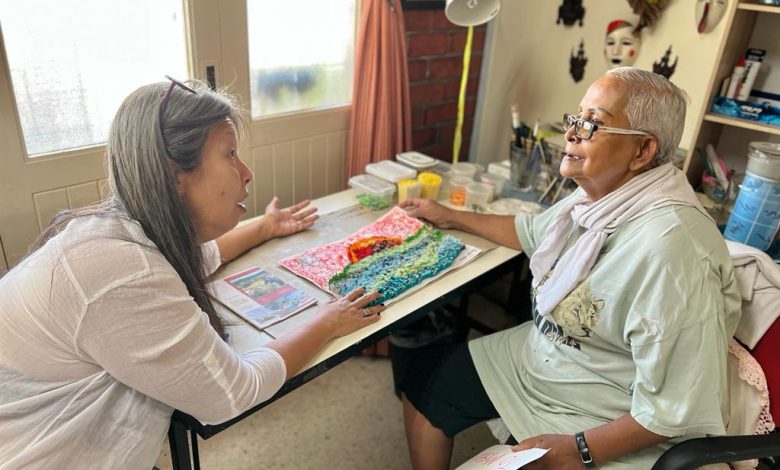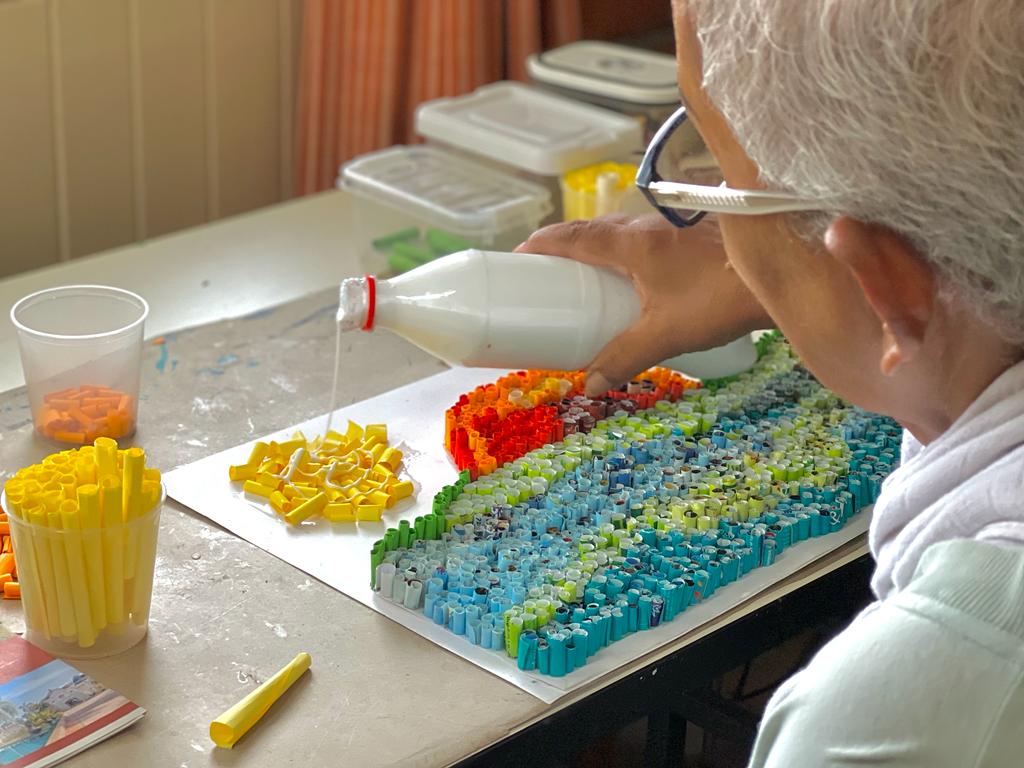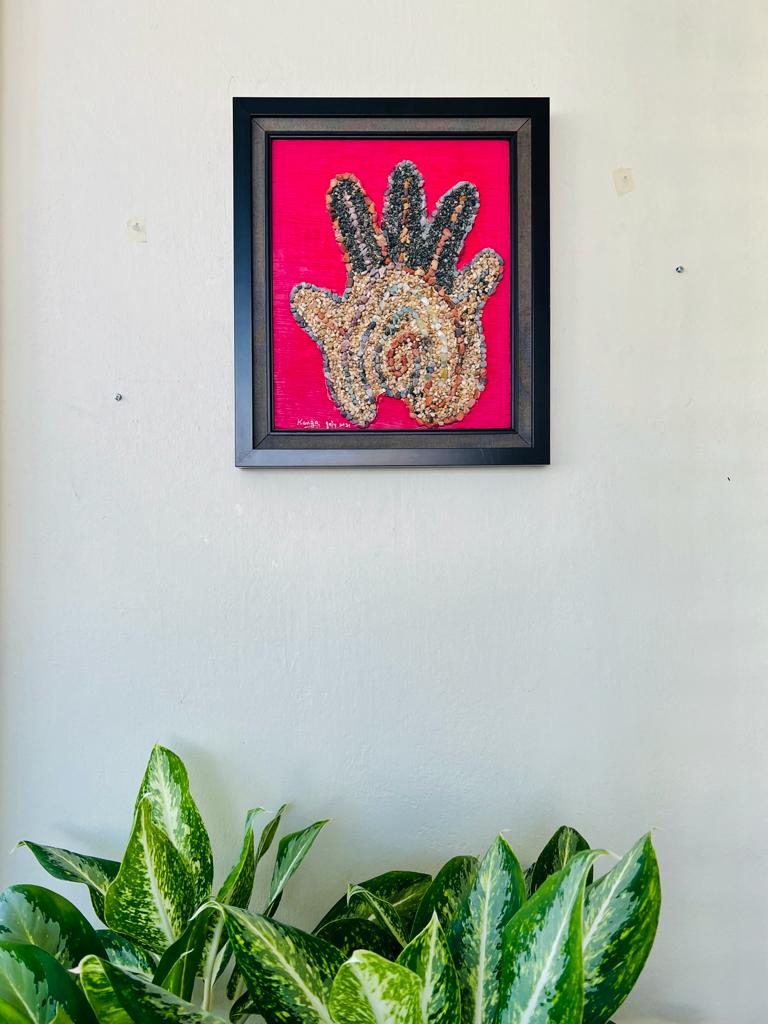

Art facilitator, Alice Ng, who has been working with people with learning difficulties shared that art activities as simple as cutting and rolling out papers can grant favourable outcomes for individuals with dementia.
Why, you may ask?
While the process may not seem to confer clear-cut benefits, Alice said art is not only stimulating for the mind, but it also boosts one’s bodily function, and fine motor skills.
The materials to create paper craft come from recycled papers, for instance, magazines or newspapers. This way we can give them a new purpose and at the same time, help the artists build resilience.


It is always a two-way street for her in class as students are given the freedom to express their thoughts and incorporate it into their work, instead of being told what to do. Ideas are purely based on one’s own creativity, because it will only then, she believes, bring out their innate creativity.
Currently, working with Irene John, who has been diagnosed with mild vascular dementia, Alice notices a jovial change in her, and art is the primary factor of that positivity!
An early piece of Irene’s craft is a finger labyrinth where Irene assembled pebbles in a pattern of her handprint. Alice said that tracing the path stimulates the sensation of touch and is also an exercise for the brain, eyes as well as fingers. Sorting out the pebbles is a very good form of activity for finger coordination.


Another thing she values most is putting the person first before their disability; ‘A person with dementia’.
“It’s so important that we recognise the person for who they are but most people have failed to see beyond their disability. It is the person we are empowering, it is the person we are giving a place of recognition.
“Unfortunately, our mindset of focusing on what they cannot do has posed a big hindrance to us in finding a solution for them. Not to mention, our closed mindset has also robbed them of their independence. We need to continue to support independence where as long as the person is still able to do even the tiniest thing, let them do it,” she said.
Working with her students gifted her a new way of looking at things
She has gained a broader exposure in her time spent with her students with disabilities which has led her out of the conventional image and reshaped her perception on things. “I have learned so much from being with them, I don’t just give but I also receive a lot in return.”
The crucial key here is to be able to speak their language, whether it be verbal or non-verbal cues. To resonate with them, we have to understand what they are feeling, we need to breathe their emotions.
Once the differences are bridged, a connection is born. It is all about how they feel during the moment you are with them.
Art as a therapy is often thought to be something that has to do with painting, drawing, sketching and other ‘art’ related activities.
As for Alice, she employed the term, ‘Reminiscence’ activities for her art sessions with Irene which include using empowering cards, listening to songs that evoke nostalgia, visiting places among others.
Let’s take some time off and join Alice’s latest workshop, ‘The Joy of Line Drawing’. The door is open to people from all walks of life! Book your slot a few days in advance at 011-14449891 via WhatsApp.
Gisele Soo


